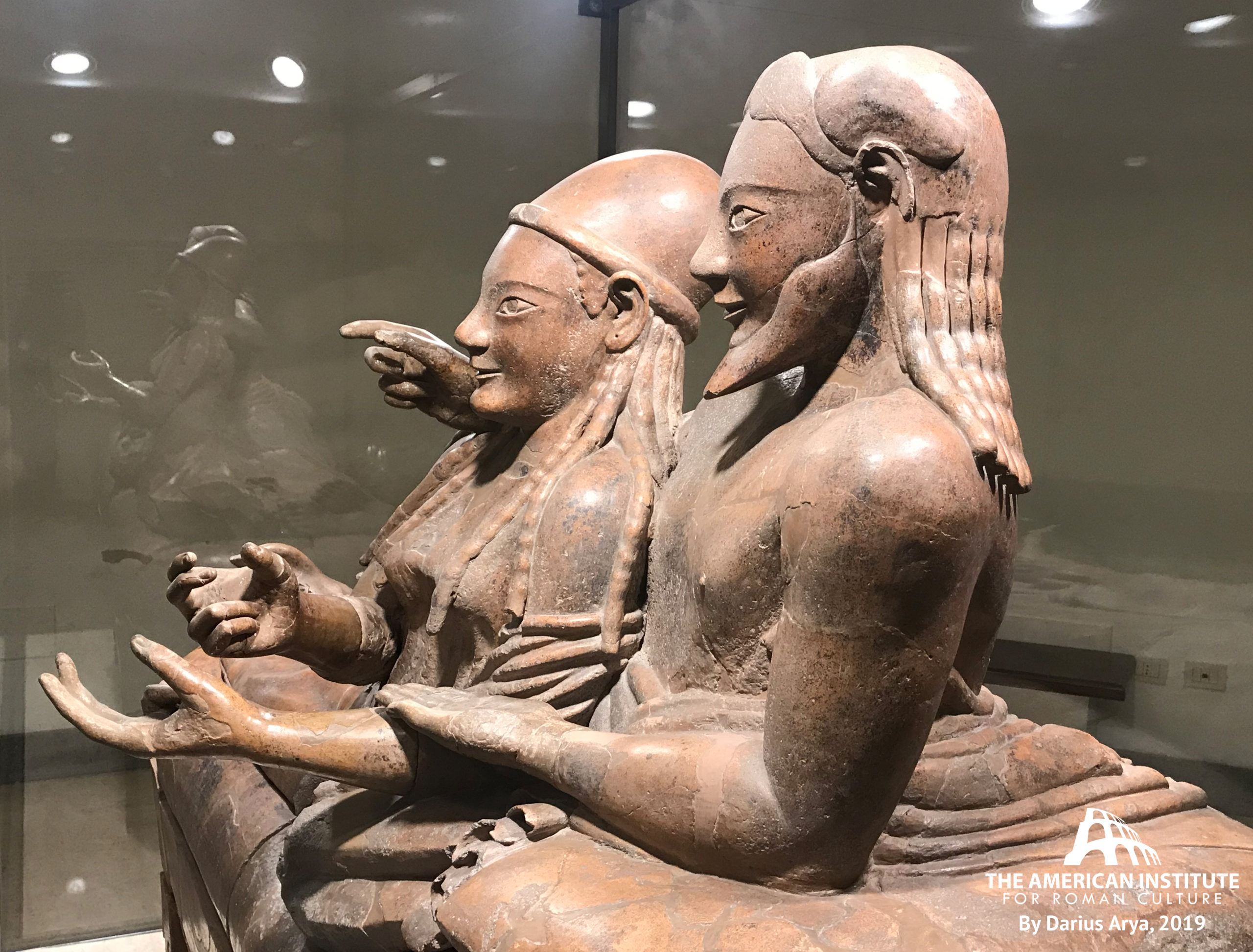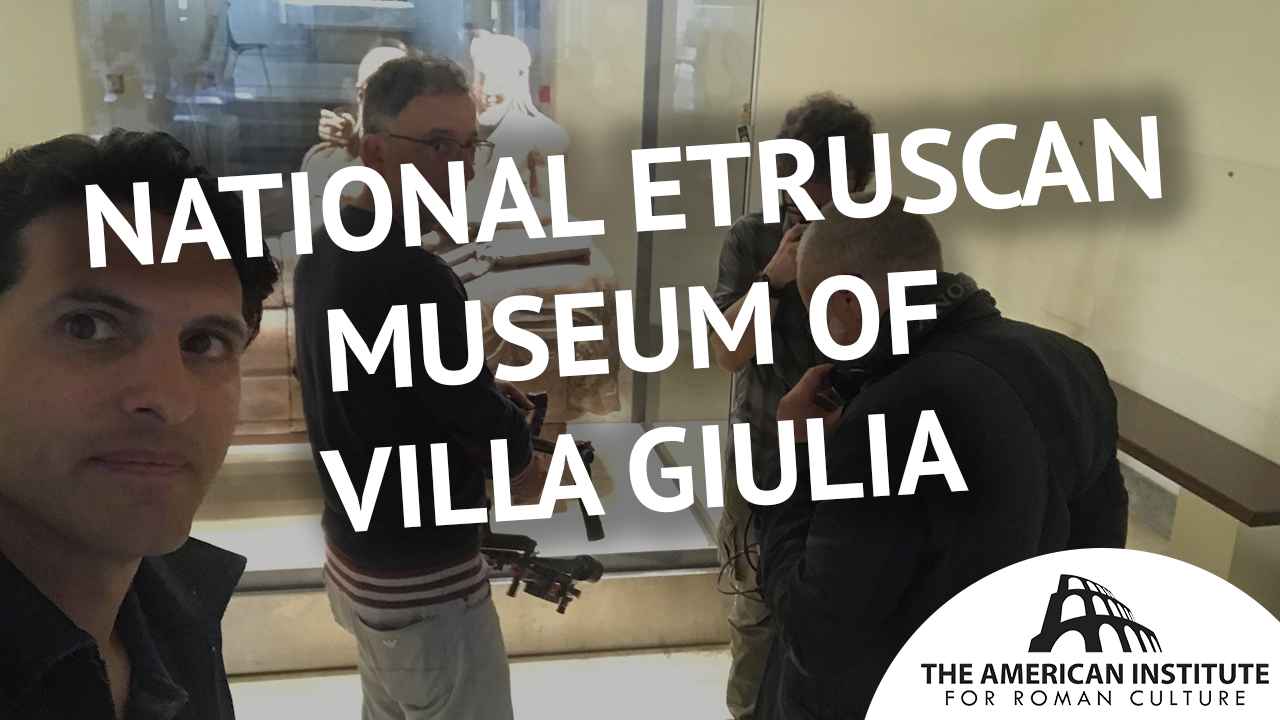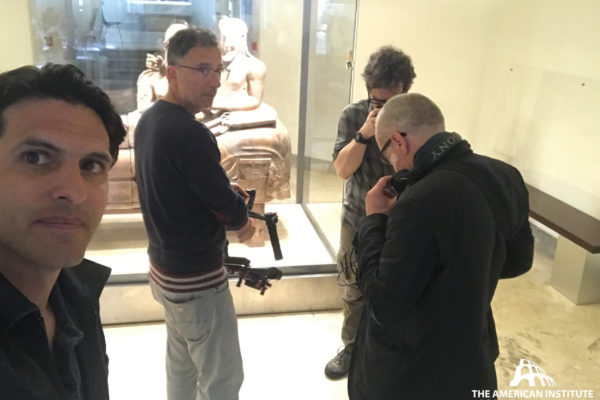The National Etruscan Museum is housed in the ex-papal residence of Villa Giulia, named for Pope Julius III, the artistic patron who commissioned it from Vasari and Michelangelo from 1550-55. The Etruscan collection dates from the 19th century, with many pieces having been excavated and reconstructed around this time. Like many sites in Rome, the museum is a historical mosaic, combining pre-Roman culture, mannerist architecture, and 19th century archaeology.
Many significant artifacts are found in Villa Giulia that illustrate Etruscan history and the Etruscans’ interactions with other ancient communities. The Etruscans lived in modern-day central Italy in city states which have left their mark across Tuscany and Umbria. Their culture flourished from the Iron Age until their suppression by the Romans by 265-264 BCE, although they maintained a cultural identity and distinct language until around the first century CE.
Villa Giulia is famed for its terracotta Sarcophagus of the Spouses, which portrays a husband and wife reclining together on a kline, the archetypal banqueting couch imported from Greece and integral to the Etruscan banqueting tradition (adapted from the Greek symposium). Besides accomplished artistry, this piece demonstrates both the distinct Etruscan style with elements of Hellenistic influence: respected women were excluded from the symposium but here the couple dines together in the afterlife.
Another multicultural exhibit is the gold tablets which once decorated the doors of Temple A at Pyrgi, the port of Caere, crucial to the prosperity of the seafaring Etruscans. Inscribed bilingually in Etruscan and Phoenician, the text thanks a Phoenician goddess for the victory of an Etruscan king in 470 BCE. The pediment of Temple A is also a centerpiece of Villa Giulia, having been painstakingly reconstructed from over 2,000 fragments to reveal a relief of the Seven Against Thebes myth: the Greek myth of the fratricide of the sons of Oedipus is rendered in Etruscan style, a composition which is dynamic and violent as the figure of Tydeus devours the brain of his attacker. Coevally, Aeschylus composed his tragedy concerning the same myth, evidencing the separate development of shared inspiration and the Etruscans’ cross-cultural literacy.
A defining example of Etruscan material culture can be found in their funerary vessels, including hut urns. Hut urns served a special function as houses for the ashes of the recently deceased, first made in terracotta and later in bronze. They are useful as direct representations of ancient Italic residences and reveal the social organization of the community and social status of the person for whom they were produced. Etruscans also utilized urns that resembled human figures with features such as spherical heads or breasts, conveying characteristics of the person they contained. Villa Giulia showcases a rare example of a reconstructed tomb with grave goods arranged as they were discovered, including an amphora with the remains of a pet dog. Through impressive remnants of their material culture, the nature of Etruscan civilization is revealed and preserved in the classically inspired surroundings of Villa Giulia.
References
- Claridge, “Rome: An Oxford Archaeological Guide”, (Oxford 2010), 477-481.
- Nagy, L. Bonfante, and J. K. Whitehead, “Searching for Etruscan Identity.” American Journal of Archaeology 112.3: 413-417, Archaeological Institute of America, (2008).
- M. Turfa, “The Etruscans.” The Peoples of Ancient Italy, Eds. Farney, G. D. and Bradley, G (2008).
- D. Beazley, “Etruscan Vase-Painting” (Oxford 1947).
- M. Michetti, “Ports: Trade, Cultural Connections, Sanctuaries and Emporia”. Caere, Eds. Thomson de Grummond, N. and Pieraccini, L. C. (Texas 2016).
- P. Baglione, “Pyrgi, Harbour and Sanctuary of Caere: Landscape, Urbanistic Planning and Architectural Features”, Archeologia e Calcolatori 28.2, (2007), 201-210.
Explore further:
This content is brought to you by The American Institute for Roman Culture, a 501(C)3 US Non-Profit Organization.
Please support our mission to aid learning and understanding of ancient Rome through free-to-access content by donating today.
Cite This Page
Cite this page as: Darius Arya, The American Institute for Roman Culture, “National Etruscan Museum of Villa Giulia” Ancient Rome Live. Last modified 11/11/2019. https://ancientromelive.org/national-etruscan-museum-of-villa-giulia/
License
Created by The American Institute of Roman Culture, published on 10/24/2019 under the following license: Creative Commons: Attribution-NonCommercial-ShareAlike. This license lets others remix, tweak, and build upon this content non-commercially, as long as they credit the author and license their new creations under the identical terms. Please note that content linked from this page may have different licensing terms.








